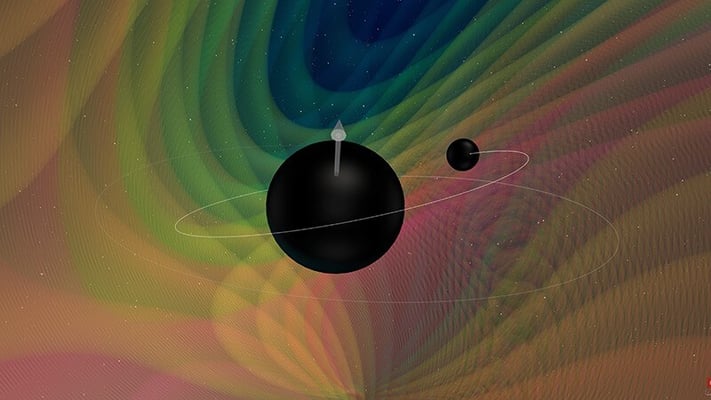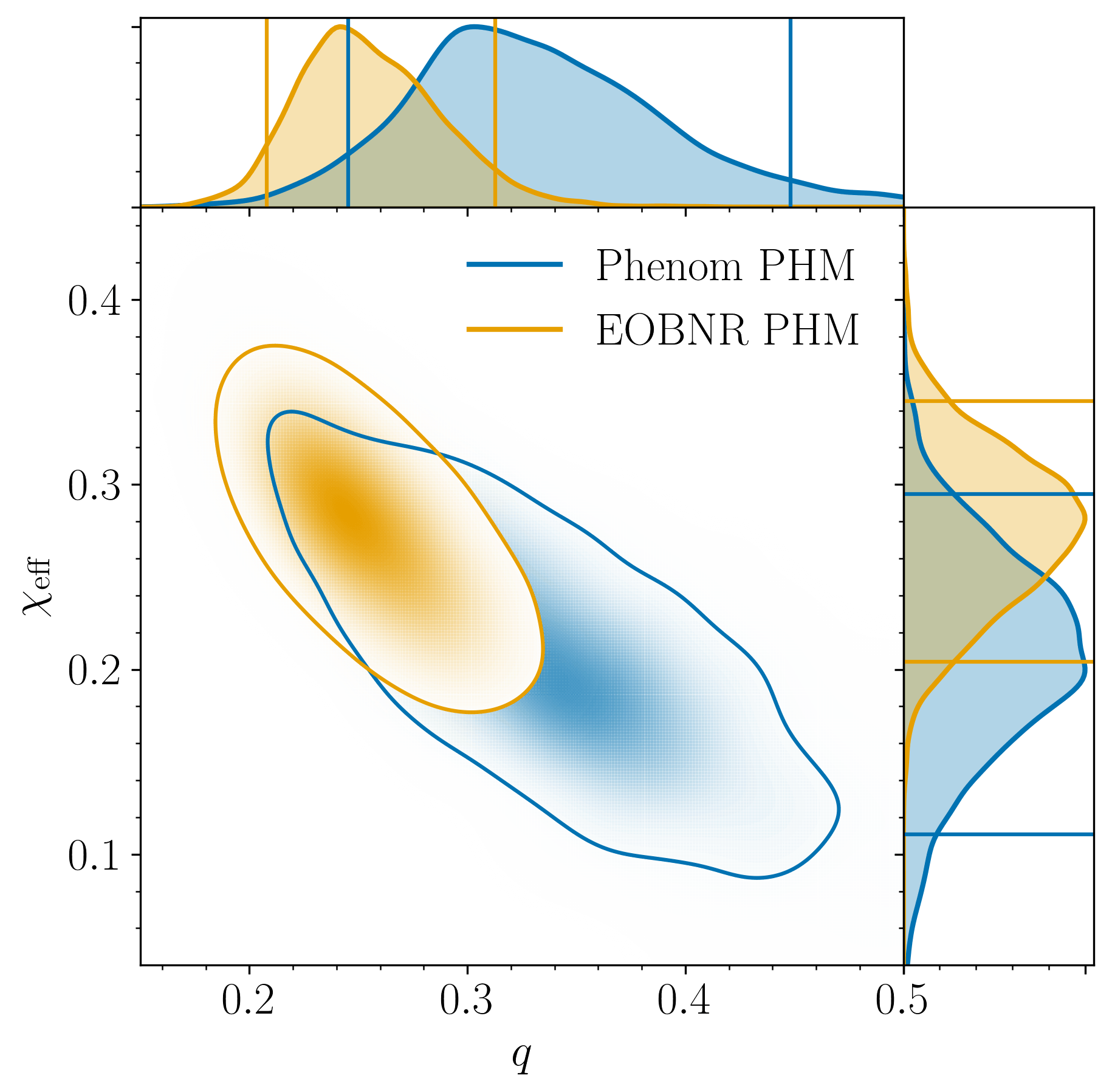For the First Time Astronomers Captured the Gravitational Waves from an Unevenly Sized Black Holes

A visualization of a collision between two differently sized black holes. Image © N. Fischer, H. Pfeiffer, A. Buonanno (Max Planck Institute for Gravitational Physics), Simulating eXtreme Spacetimes (SXS) Collaboration.
LIGO made the first discovery of gravitational waves in September 2015, by detecting the space-time ripples from two merging black holes. LIGO later joined by Virgo, subsequently made ten more detections in two observing runs that ended in 2017: nine more black-hole mergers and one collision of two neutron stars, and now this collaboration added new historic detection event on its list.
On April 18, 2020, the LIGO Scientific Collaboration and the Virgo Collaboration announced one more discovery of gravitational waves from a binary black hole merger. They record this anomalous signal, labelled GW190412, of gravitational waves on April 12, 2019, at 05:30:44 UTC. Heretofore, the gravitational waves observed were from the black hole pair of nearly equal masses but this (GW190412) detection became a more concerning subject to researchers as the mass of black holes involved are highly different from each other.
The team reported - this gravitational waves from a binary black hole is different from observations during the first two observing runs most notably due to its asymmetric masses: a ~30 solar mass black hole merged with a ~8 solar mass black hole companion.
The research finding was posted in the arXiv preprint server.
[1 Solar mass ≈ 2 × 1030 kg]
Prior to the start of the third observing run (O3), which began on April 1st, 2019, the Advanced LIGO and Advanced Virgo detectors were upgraded to increase the sensitivity of all three interferometers. The upgraded system consists of a system called 'squeezed light' - specially prepared photon states that use the Heisenberg uncertainty principle to reduce the noise at high frequencies. In addition, mirrors were also upgraded, the main laser power was increased, and other changes were made to bring up the sensitivity. This increase in sensitivity has broadened the detector network’s access to Gravitational Wave signals from the population of merging binary black holes sources, allowing for the detection of rarer systems.
About the detection from its O3, Maya Fishbach, an astrophysicist at the University of Chicago in Illinois said, "It's an exceptional event." Similar mergers on which data have been published all took place between black holes with roughly equal masses, so this new one dramatically upsets that pattern, she says.
About one of the application side of the gravitational waves, Maximiliano Isi at the Massachusetts Institution of Technology in Cambridge, another LIGO member who was presenting at the meeting said, "We are in a new regime of testing general relativity." The first detection of gravitational waves back in 2015 proved that Albert Einstein’s theory of gravity is valid until now. Similarly, a suite of tests was also performed to determine if GW190412 is consistent with general relativity and they found, as earlier, no inconsistencies with general relativity, adding another point of support for Einstein's theory of gravity: that gravitational waves "ring" at more than one fundamental frequency, so-called higher multipoles.
Previous observation of black holes in the Milky Way suggested that black holes should have high spins, but this did not show up in gravitational-wave data from the first two runs and this had left researchers baffled. Interestingly, recently observed data from GW190412, researchers were able to discern the 'spin' of black holes. "We know with confidence that this heavier object had to be spinning," said Isi.
GW190412 is unique in that it is the first black hole merger where the masses of the two black holes are definitively unequal - one black hole in the system is more than 3 times heavier than the other. The unequal masses of GW190412 lead to an asymmetry in the gravitational-wave emission that helped astrophysicists to better infer particular parameters of the system. Researches found that the effective spin was positive and this which tells them that at least one of the black holes was spinning in an orientation close to the orbit of the two black holes around each other. The effective spin and mass ratio inferred for GW190412 is shown in Figure.

Though any effects of precession are not strong enough to be claimed definitively, they saw the marginal signs that the system is precessing. In addition, the unequal masses also helped to break an ambiguity between the distance and the inclination of the system, allowing for better measurement of both parameters. GW190412 occurred almost 2.5 billion lightyears away from Earth.
An unprecedented signal from unevenly sized objects gives astronomers rare insight into how black holes spin.
About the process of merging of this latest unique event, the team highlighted that one of the two black holes that merged had an estimated mass of around 8 solar masses, and the other was more than 3 times larger, 30 solar masses. This imbalance made the larger black hole distort the space around it, so the other’s trajectory deviated from a perfect spiral. This could be seen in the resulting gravitational waves, which were created as the objects spiralled into each other. All the other merger events that have been unveiled produced a wave that forms a similar 'chirp' shape - which increases in both intensity and frequency up to the moment of collision. But GW190412 was different: its intensity didn't simply rise as in a chirp. Fishbach said, "This makes this system very interesting, just looking at the morphology of the signal."
Giancarlo Cella, a researcher at Istituto Nazionale di Fisica Nucleare (INFN) and the Virgo Data Analysis Coordinator said, "The Virgo and LIGO detectors are becoming more and more sensitive, the rate of detections increases and we expect new and unusual events. GW190412 is unusual and interesting, because of the large mass difference between the two coalescing black holes. We are learning that systems of this kind exist and how rare they are. This will allow us to deduce how they formed, which is something that I find exciting."
